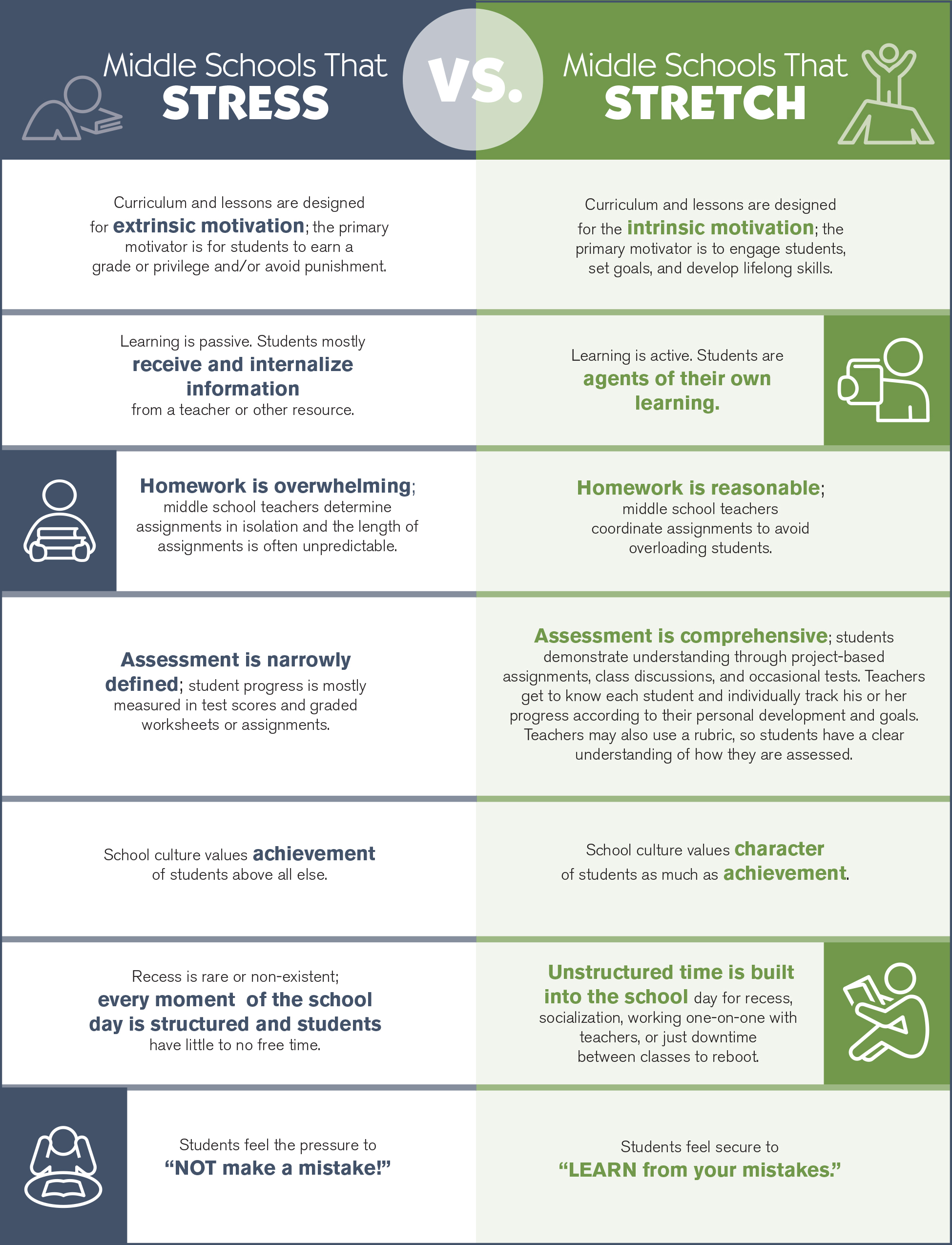How middle school parents can tell the difference
As parents, it’s natural to want our children to be challenged to their fullest capabilities as they move from preschool to the elementary grades and on to middle school. But how can we tell when a challenge is a positive, growth-inspiring stretch or confidence-depleting stress?
New research offers insights that can help families manage the fine line between encouraging children toward growth (stretch) vs. subjecting them to arbitrary or unacceptable levels of pressure (stress). Studies conducted by the National Academies of Sciences, Engineering and Medicine and the Robert Wood Johnson Foundation found that students attending schools with an emphasis on “high performance” and adolescents experiencing “excessive pressure to excel” are experiencing higher rates of behavioral and mental health problems than the national norm.
Knowing the difference between stretch and stress — especially during the critical middle school years — can help families balance the intense pressure on young people to succeed. This infographic, created by The Willow School, highlights some differences between middle schools that stress and middle schools that stretch:
Willow Head of School Francisco Ayala says the distinction between stress and stretch is an important one. “Though stress, in small doses, can be positive because it keeps us alert, motivated, and ready to avoid danger, being in a chronic state of stress has significant, negative physical and emotional impacts,” he said. “Stretch, however, is where you work to expand your knowledge and understanding. Learning or re-learning takes place, and you develop the motivation to make a change, challenge yourself, or take a risk. Our bodies, and our minds, benefit from stretching, not stressing.”
How can parents determine if they are encouraging their children toward success or subjecting them to unacceptable levels of stress? The answer may lie in how we, as parents or educators, define success, how much we push for high visible achievement versus true personal growth, and how we help our children understand where their self-worth comes from.
Richard Weissbourd Ed.D., psychologist and director of Harvard Graduate School of Education’s Making Caring Common Project (a national initiative adopted by Willow), offered this advice in a recent Washington Post article: “Children are so saturated with messages about achievement in many schools and communities that parents need to be really conscious about fighting against those messages at home,” he said. As parents, Dr. Weissbourd went on to say, we need to stay vigilant about the hidden messages around achievement that we send our kids every day by what we prioritize, what we admire about others, and what consumes our time and energy.
Want to see how The Willow School stretches middle schoolers instead of stressing them? Sign up for a personalized tour of our Age 3-Grade 8 campus with Director of Admissions Lisa Vander Veen.


